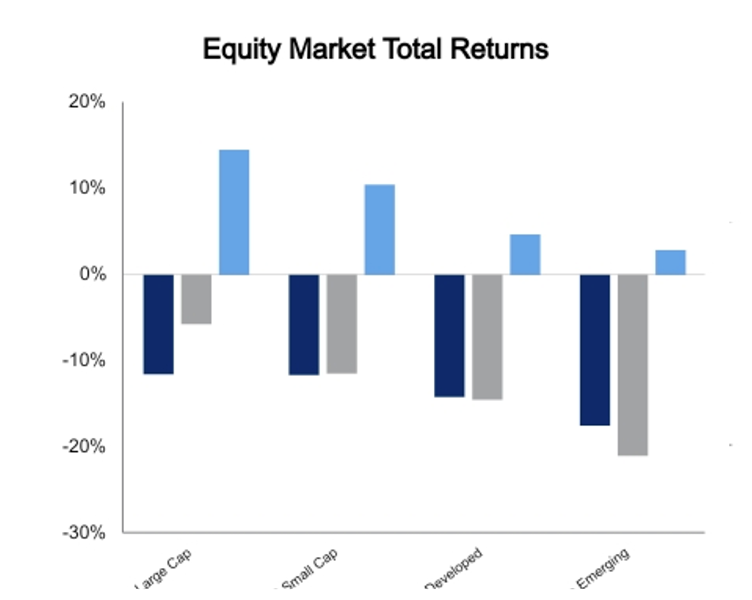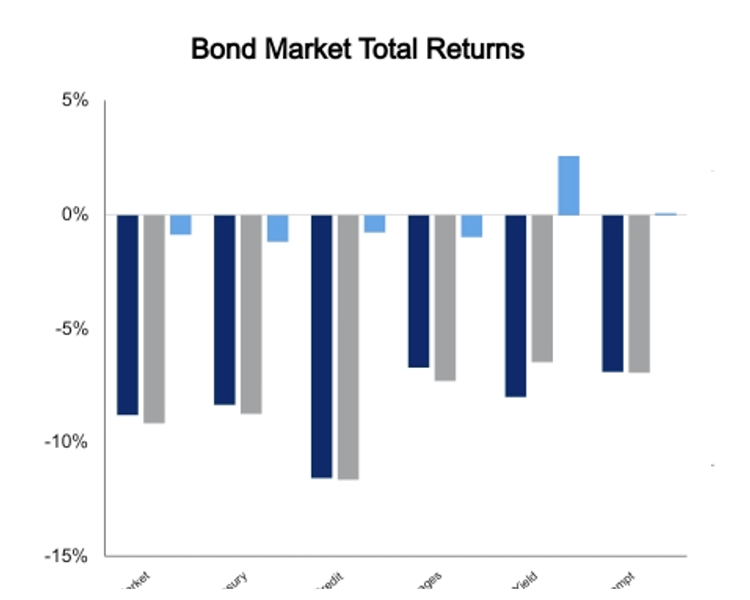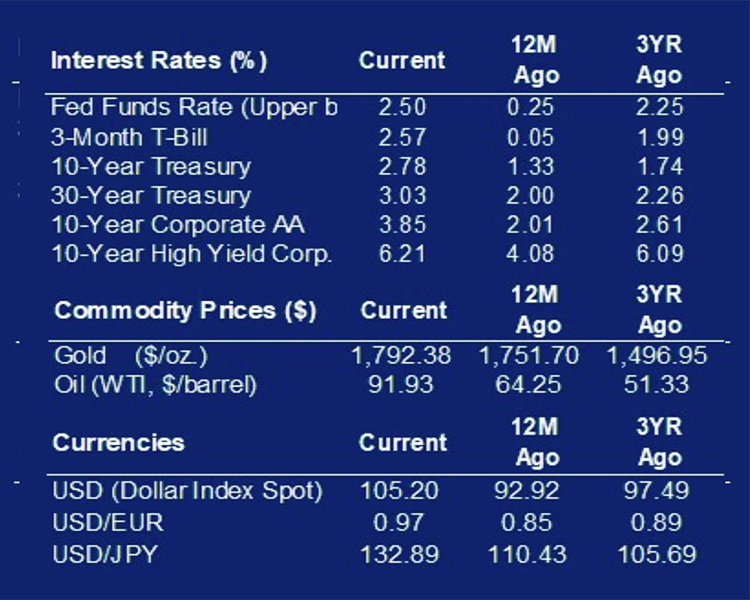Equity Rise Continues as CPI Eases
Equities jumped on Wednesday after the Consumer Price Index (CPI) report for July came in well below expectations. This ended a four‐day run of sideways movement that helped enable the Chicago Board Options Exchange Volatility Index (VIX) to bleed lower.
A lower volatility is a big tailwind to equities as it is an input into many systematic strategies.
These strategies have been increasing equity exposure and helped fuel the recent run‐up. The VIX closed below 20 for the first time since April. This time, however, the Dollar Index is falling and is a tailwind to near‐term continuation of the equity advance.
The S&P 500 ended the week up 1.4% and small caps jumped 3.2%.
Forecasting the Fed
It was a heavy economic slate for the week with market narratives shifting by the day.
Jobless claims have stabilized in recent weeks. This is likely one of the most important economic data points in the coming months as it is a lead on future employment reports. The Bureau of Labor Statistics reported that 528,000 non‐ farm jobs were added in July.
This was double the expectations.
This caused bond yields to jump in anticipation of continued 75 basis point hikes from the Federal Reserve. Equities knee‐jerked lower but regained some losses by day’s end. Unfortunately, the internals were not as strong with full‐time jobs weak, workers with multiple jobs jumping and significant smoothing.
The Establishment Survey is designed to be smooth.
The Household Survey is not designed to be as smooth.
It is sending a completely different message. Over the last four months the Establishment Survey has reported that 1.68 million jobs have been created, but the Household Survey says 449,000 jobs have been lost.
The CPI came in flat versus the prior month. This was below expectations and by far the lowest reading of this cycle. Year‐over‐year CPI is down to 8.5% and core CPI is down to 5.9%. Likely these numbers will be less relevant to the market as it will now focus on monthly changes and look for readings at or below 0.3% per month in determining the Fed reaction function.
It is important to remember the numbers are not as important as the policy response to the numbers. The Fed has communicated continued tightening of financial conditions until there are sustained monthly readings of 0.2‐0.3%.
More Mixed Signals
- Revolving credit surges, the largest 10‐month increase since the mid‐1990s.
- Some companies that reported early this earnings season have already revised lower third quarter results.
- Breadth surges (days when more than 90% of stocks advance) resembles the beginning of most new bull markets.
- Equities historically bottom after the Fed begins cutting, which is has yet to take place.
- Equities historically bottom when high inflation peaks, but only when jobless claims and Purchasing Managers’ Index data supports economic recovery.
Investment and Insurance Products are:
- NOT INSURED BY THE FDIC
- NOT INSURED BY ANY FEDERAL GOVERNMENT AGENCY
- NOT A DEPOSIT OF OTHER OBLIGATION OF, OR GUARANTEED BY, HERRING BANK, OR ANY BANK AFFILIATE
- SUBJECT TO INVESTMENT RISKS, INCLUDING POSSIBLE LOSS OF THE PRINCIPAL AMOUNT INVESTED



